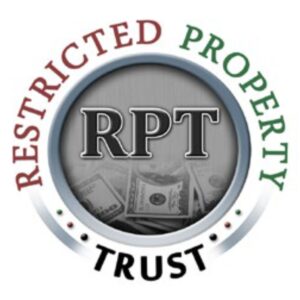Securing Your Wealth: How Restricted Property Trusts Can Shape Your Financial Future
Securing Your Wealth: How Restricted Property Trusts Can Shape Your Financial Future
Blog Article

In the world of managing wealth and asset protection, Restricted Property Trusts (RPTs) emerge as a powerful instrument for securing and maximizing your financial plan. Although not as well-known as other financial instruments Restricted Property Trust offer distinct advantages for securing wealth and enhancing estate planning strategies.
Understanding Restricted Property Trusts
It is a Restricted Property Trust is a specialized type of trust designed to protect and manage assets through specific restrictions imposed on their use or transfer. Most commonly RPTs are utilized to hold important assets, such as real estate or business interests and are aimed at achieving the long-term security of financial assets.
Key Features of RPTs
1. Asset Protection: One of the major advantages of RPTs is their protection of assets from creditors and legal claims. By placing property into an RPT, owners can ensure that their assets are insulated from potential lawsuits or financial disputes.
2. Tax Benefits: RPTs can provide valuable tax benefits. Contributions to the trust may be tax deductible, and the trust may enjoy favorable tax treatment for income derived from the trust's assets. This could result in substantial tax savings over time.
3. Estate Planning: RPTs are a valuable instrument for estate planning. They allow individuals to transfer assets to beneficiaries and maintain control over how and when these items are divided. This can help prevent probate and lower estate taxes.
4. Flexibility: Despite the limitations, RPTs offer a degree of flexibility with regards to how assets are distributed and managed. Trustees are given specific guidelines on how to manage the property and ensure that the property is in line with the person's financial goals and plans from the past.
Implementing an RPT
The process of setting up an Restricted Property Trust involves several important steps. It is first important to work with a financial advisor or estate planning attorney that is skilled in RPTs to ensure the trust is set up correctly. The trust documents will detail the specific restrictions and conditions that pertain to the assets, and the duties and responsibilities of trustees.
After the trust has been established, periodic reviews and updates could be needed for ensuring that the trust is meeting its objectives and adapt to any changes in an individual's financial circumstances or plans.
Conclusion
Restricted Property Trust represent a sophisticated method of wealth management as well as asset security. Through the use of the unique characteristics of RPTs, people can secure their assets, benefit from tax benefits, and achieve their estate planning goals with greater confidence. As with any financial strategy it is essential to seek expert advice to customize your RPT to your individual requirements and situation. By adhering to the guidelines provided by RPTs will open the way for the most secure and successful financial future.
Report this page